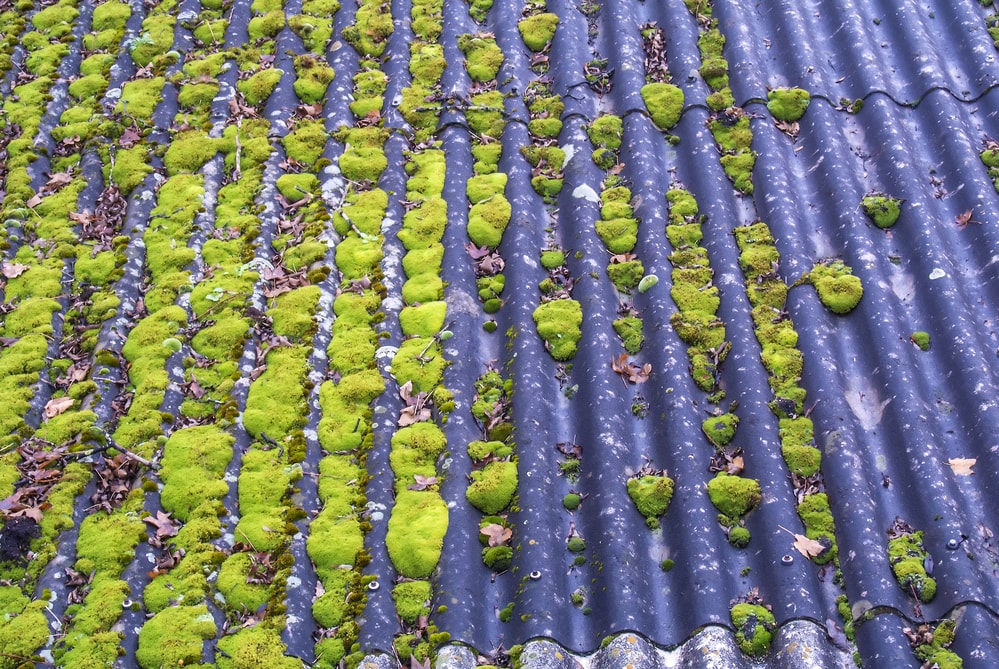We’ve all heard the saying about having a roof over your head. It’s’ a well-known saying for good reason — the roof is quite possibly the most important part of a home that protects and shelters you and your family. Not only does the roof offer you defense against wind, rain, snow, hail, and heat. It will also prevent many other potential issues and problems with your home.
It is very important to keep an eye on the health of your roof and maintain its quality for as long as possible. One thing that you’ll want to look for and eliminate from your roof is mold. Stains and growths are common issues you’ll find on a roof — especially the shingles. More than likely, anything you see up there is algae, moss, or mold.
Mold is the least common but still needs to be dealt with as soon as it has been discovered. This is necessary to preserve the health and integrity of your roof. In this article, we will cover some tips to help you remove any moss that is on your roof. But first, let’s help you identify if you have moss or something else. If you see:
- Streaks that are black, green, or blue-green and slimy then you have algae.
- Bright green plant growth covering your roof is moss.
- Round spots — likely a lot to them — possibly coming from your attic and in various colors, then what you are looking at is mold.
Now that we know how to tell if you have moss, mold, or algae how do you get rid of it?
How To Clean Mold, Algae, And Moss
The thing about finding mold on your roof is that it is not going to just be on the exterior. It would be a good idea to have your attic inspected for mold as well. This is the best way to know just how much damage you have. Be prepared because usually when there is mold, there is moss or algae too.
It is recommended to have a professional do any roof cleaning that might be necessary. Getting on the roof without the proper safety equipment or training can lead to something much worse than a moldy roof. A trained roofing contractor can make sure that your roof is taken care of safely and efficiently. But if you choose to do it yourself, you’ll need to know what to use.
Use your hose with a nozzle on the end. You might be tempted to, but do not attempt to do this with a pressure washer. A pressure washer will damage shingles and you’ll end up doing more harm than good.
Use a solution of bleach and water, mixed 50/50. Put it on, let it sit for at least 30 minutes, and then spray it off. For a stronger cleaning solution, you can add some trisodium phosphate (about a half cup per gallon of bleach and water. You may want to use oxygen bleach instead of laundry bleach. This will decrease the chance of any runoff leaving a negative impact on your grass or garden. There are also several readymade cleaners that you can use. Just make sure you read the label and follow all instructions!
Prevention
The best way to clean mold off of your roof is to prevent it from happening in the first place. When there is no moisture, mold doesn’t grow. Waterproofing your roof is something that you may want to look into if mold has been a problem with your roof. Contact your roofing contractor to learn more about waterproofing your roof.
Premier Roofing
Don’t head up onto your roof without taking all of the necessary precautions. It is definitely not a good idea for everyone and for every home. In many cases, getting up there to clean the roof doesn’t eliminate the problems with the roof. The mold itself won’t cause damage to your roof. However, whatever is happening to allow the mold to grow — some kind of moisture — can certainly cause big problems for your roof. There’s a good chance that you have other related issues that will require a professional roofing contractor. Save yourself the trouble and let Premier Roofing take care of it for you.


